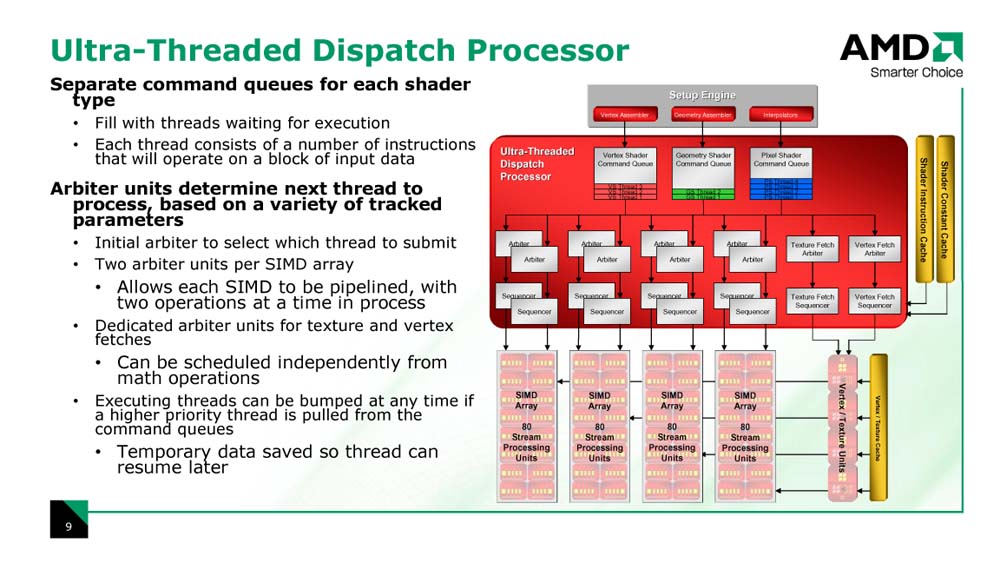"Davros"

Ah, sorry, Dave - hasty posting during an advert break syndrome

For the rest of this posting, just assume I've got one eye somewhere else

...
Well, I'm not sure I'm in love with R600's approach, either. Should nearby pixels really be handled by disjoint TMUs? Does it make sense to *always* ship work across the chip? One could come up with a trivial predication case that would effectively underutilize R600's TMUs as well.
I think one would need to do some serious simulation to understand this.
I can only think that once you've built latency tolerance, the two approaches (private TUs versus shared-distributed TUs) end up moving the same amount of data around the ring.
Hmm, except that texels in compressed form (which I presume they are, while they're in L2) would consume less ring bandwidth. When a TU produces a quad of texel results (or, perhaps, 4 quads of texel results as a burst in response to one batch) that are fully filtered and are destined for registers, surely they consume more bandwidth on the ring? Then again, texel-overhead relating to anisotropic filtering is saved, since those extra texels tend to stay in their "home" L2. Gah.
We don't know the rasterisation pattern in R600. Considering a batch of 64 pixels, for example, is it:
1111222233334444
1111222233334444
1111222233334444
1111222233334444
or:
1111111133333333
1111111133333333
2222222244444444
2222222244444444
etc.
I remember a rasterisation patent document that implied rasterisation along the long axis of a triangle, so either width-wise or height-wise rasterisation is possible. What's the effect of that on texel locality? How big are the screen-space tiles within which rasterisation is constrained? What about that texture caching patent application I keep linking, the prefetching one?
I can't think what kind of trivial predication you're referring to that would waste R600's TUs. The "home" arbiter for the texture requests (for a batch) is forced to treat the 16 quads of texel results that it's waiting for as asynchronous events. Predication would de-select texture-fetches at the quad level, I guess, so the arbiter would only send out quad-fetches to "foreign" TUs as needed.
Brainfade...
Jawed

